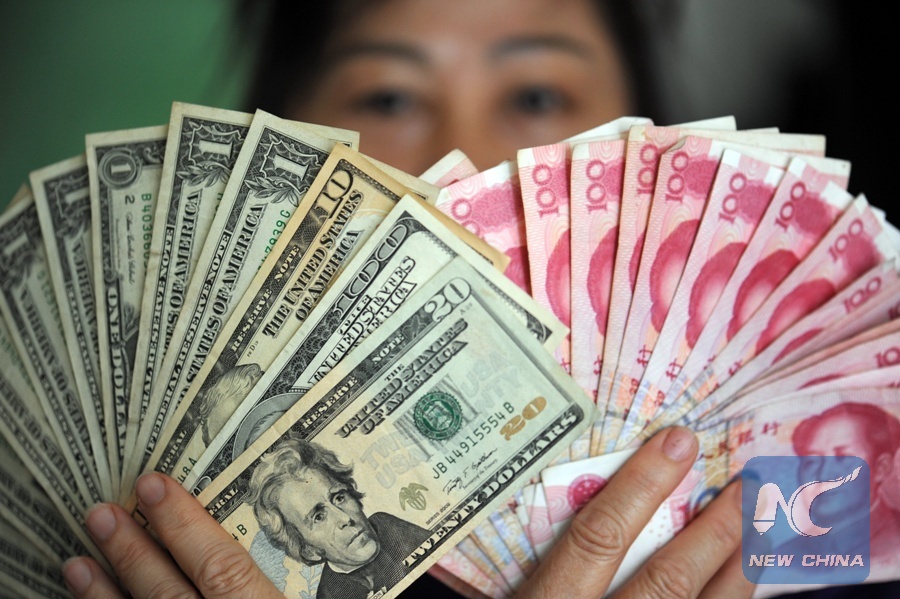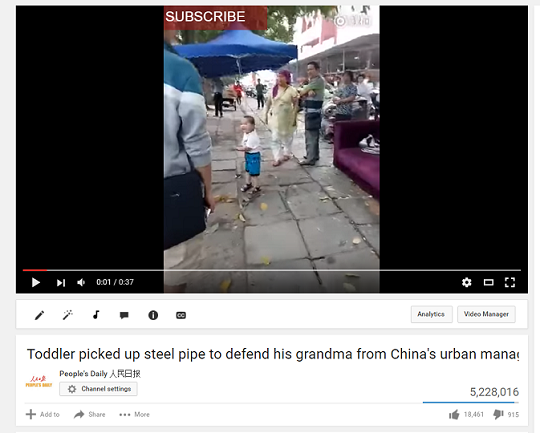

 |
| A residents shows China's RMB and US dollar banknotes in Qionghai, south China's Hainan Province, Jan. 7, 2016. The central parity rate of the Chinese yuan against the U.S. dollar weakened to 6.5646 per dollar on Jan. 7, the lowest since March 2011. (Xinhua/Meng Zhongde) (File photo) |
BEIJING, May 15 (Xinhua) -- China's credit data in April was weaker than expected, but overall credit growth stayed strong and the central bank's monetary policy will continue to be prudent.
M2, a broad measure of money supply that covers cash in circulation and all deposits, rose 12.8 percent year on year to 145 trillion yuan at the end of April, lower than the 13.4 percent year-on-year growth in March despite last April's historical low growth base, according to data released by the People's Bank of China (PBOC) on Friday.
China's new yuan-denominated lending in April amounted to 556 billion yuan (85 billion U.S. dollars), 152 billion yuan less than a year earlier while new total social financing (TSF) dropped to 751 billion yuan in April from March's 2.34 trillion yuan.
The headline disappointment might trigger some investor concern that the government has started to tighten credit policy. However, the drop does not indicate a shift in monetary policy and overall credit volume, TSF and liquidity remained stable after factoring in seasonal effects and local government debt swap, according to a statement from the PBOC.
Central bank chief economist Ma Jun pointed out that the weak data should not be over-interpreted as government bond swaps of more than 350 billion yuan having been subtracted from total loans and TSF stock, lowering credit growth statistically.
Increased corporate demand deposits, stronger fixed asset investment and credit support from policy banks might also have contributed to the slowdown, according to UBS China economist Wang Tao.
Weak RMB loans, corporate bonds and undiscounted bills were mainly to blame for shrinking TSF. In particular, new corporate bonds slid to 210 billion yuan on the back of recent onshore bond market volatility and weaker market confidence, Wang added.
The central bank will maintain a prudent monetary stance before the inflationary pressure becomes more visible and may use more targeted and flexible operations instead of broad-based easing in order to facilitate supply-side reforms and contain financial risks,the PBOC statement said.
As the cyclical recovery continues and broadens out to the mid and downstream sectors along with mild inflation, the need for further monetary loosening may be lessened, according to a research note from China International Capital Corporation Limited (CICC).
CICC expects no interest rate cuts this year and little room for lowering reserve requirements.
Day|Week

 China's first intelligent security robot debuts in Chongqing
China's first intelligent security robot debuts in Chongqing A Total of 3,552 Subscribers Vanish In Two Days; YouTube Closes All Doors to Users’ Inquiries
A Total of 3,552 Subscribers Vanish In Two Days; YouTube Closes All Doors to Users’ Inquiries Out of this world! Futuristic UFO-shaped yacht has its own garden and a stunning underwater viewing deck
Out of this world! Futuristic UFO-shaped yacht has its own garden and a stunning underwater viewing deck An old tea house in Chengdu
An old tea house in Chengdu Furious Customer Crushes All the Buns from Vendor Just Because He Was Given the Wrong Flavor
Furious Customer Crushes All the Buns from Vendor Just Because He Was Given the Wrong Flavor 20 post-90s couples hold ’naked marriage‘ in E. China
20 post-90s couples hold ’naked marriage‘ in E. China Female official wearing traditional Han costume to promote local tourism
Female official wearing traditional Han costume to promote local tourism Over 12,000 Runners Seek Medical Care in S China’s Marathon
Over 12,000 Runners Seek Medical Care in S China’s Marathon Six Luxury Sports Cars Totaled after Fail Attempts to Cross China’s Most Perilous Highway Linking SW China’s Sichuan and Tibet
Six Luxury Sports Cars Totaled after Fail Attempts to Cross China’s Most Perilous Highway Linking SW China’s Sichuan and Tibet Incredible Transformation: “Witch Child”Whose Parents Left Him for Dead in Nigerian Makes Speedy Recovery
Incredible Transformation: “Witch Child”Whose Parents Left Him for Dead in Nigerian Makes Speedy Recovery